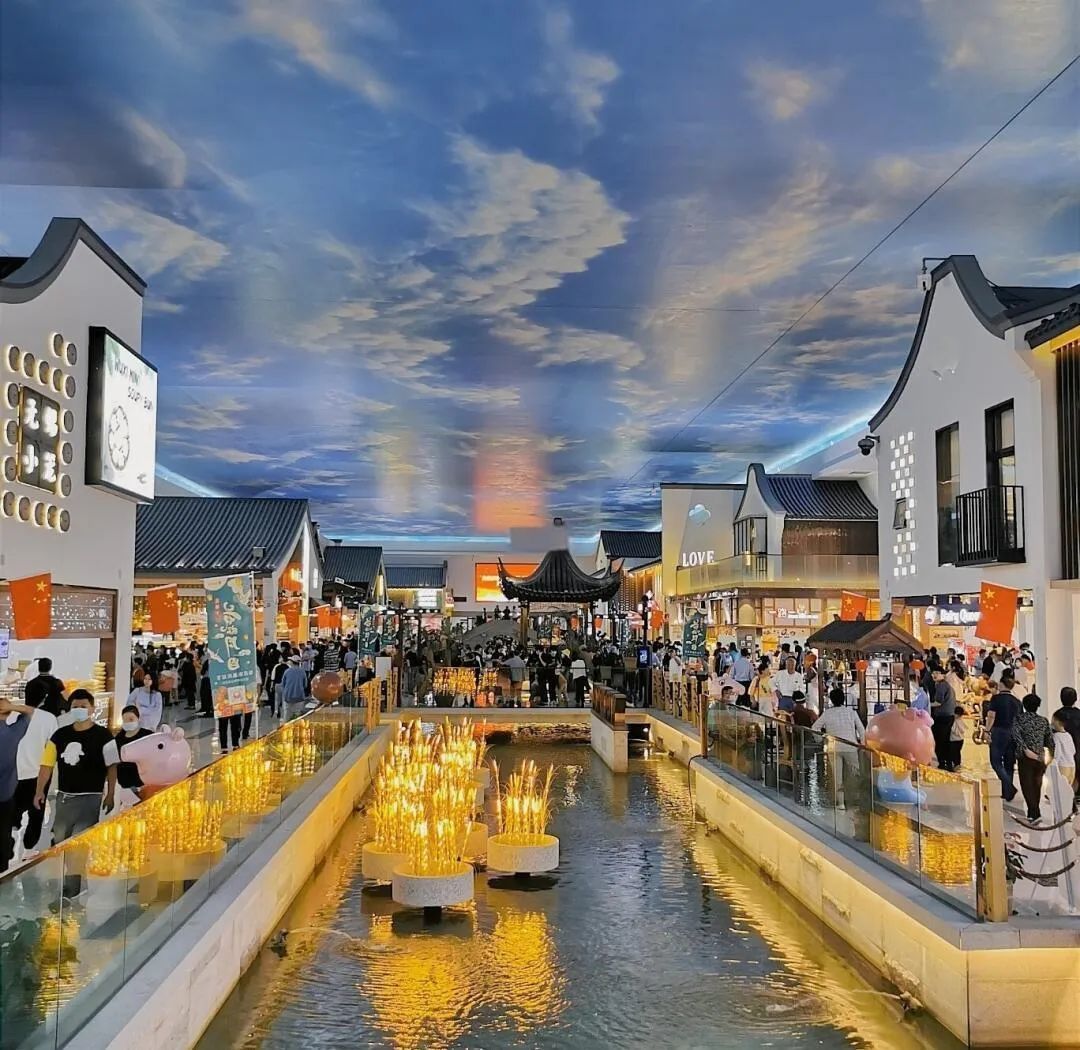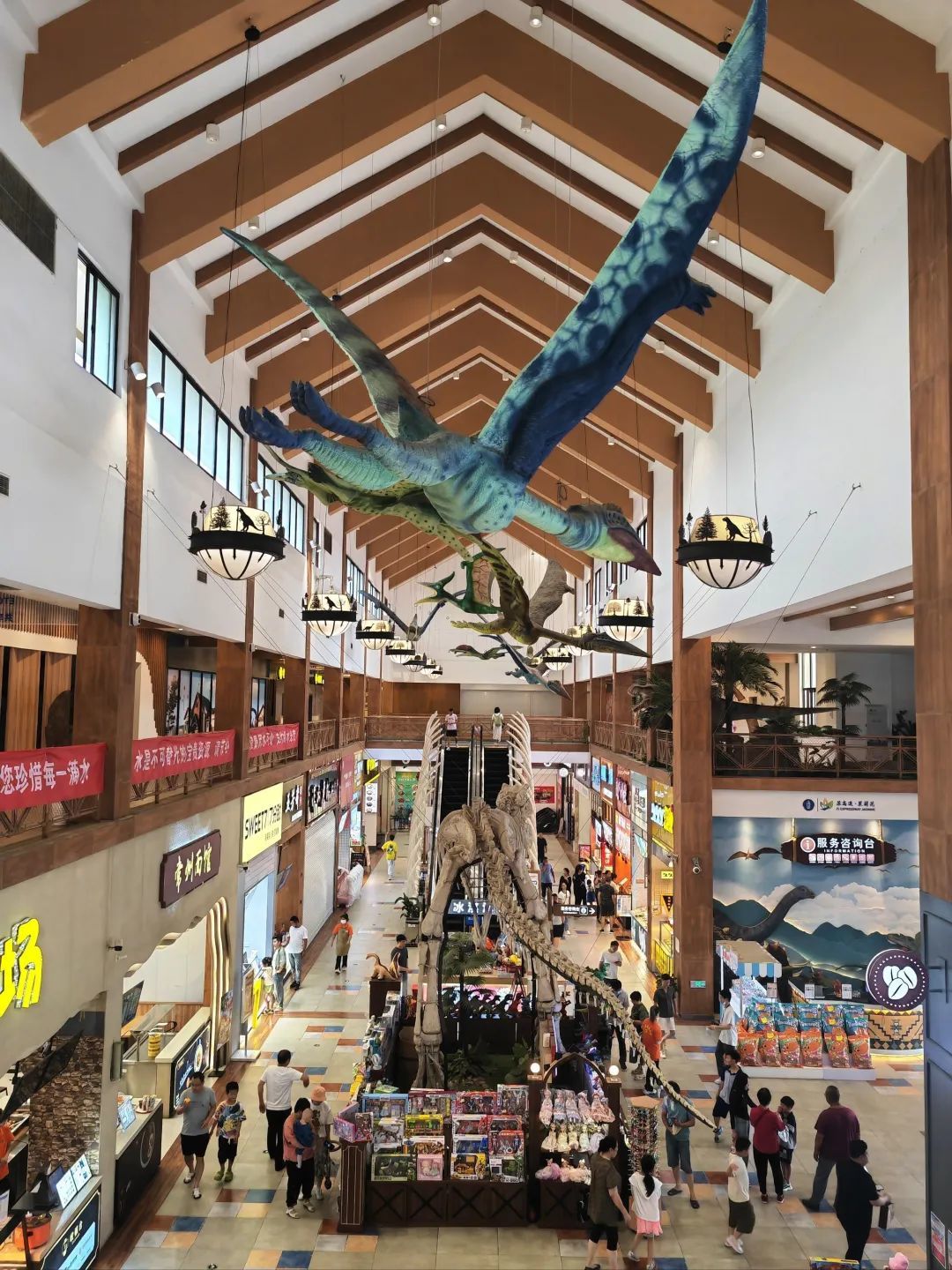
Service areas have turned into scenic spots, and scenic spots have been reduced to service areas?
Source:
Author:
Release time:
2025-08-22
Click to view details
Come here ↓ to discover new trends in cultural tourism
2025 China Tourism, Leisure and Entertainment Industry Development Conference
Join over 1000 leading cultural tourism enterprises in this grand event
See you in Zhengzhou, October 21-23!

▲
Author | CAAPA Contracted Author
Editor-in-Chief | Yang Ming
Editor | Liu Kaiye
From a “passing station” to a “tourist reservoir,” the Beihai service area in Guangxi Beibu Gulf set a record of 20,000 daily visitors during the 2025 Sea Opening Festival; Qinzhou West service area even reached 30,000 daily visitors; Zaozhuang service area in Shandong hosted over 200 weddings in the first half of the year; Jinhua service area in Zhejiang is upgrading to become the “Panda Pig·Jinhua Two-headed Crow Themed Service Area,” creating an immersive consumption space through scenographic design, specialty dining, and deep interaction; the Yakan Expressway Tianquan service area in Sichuan deeply integrates themed culture and performances, setting a “small goal” of 100 million yuan in revenue this year, up from 70 million last year...
In today's tourism landscape, highway service areas and scenic spots are playing a magical role reversal. Once regarded as “midway stops” on a journey, service areas have now become “hidden gems” that tourists deliberately detour to visit; meanwhile, scenic spots that should embody culture and poetry have, under waves of over-commercialization, turned into places people hurriedly pass through like “large service areas.”

The "scenic spot" upgrade of service areas,
From a "travel patch" to an "experience destination"
Over the past thirty years, the main narrative of China's highways has been "speed." Service areas were merely patches on this fast lane, their functions compressed into three tasks: refueling, restroom breaks, and instant noodles. Drivers and passengers were like NPCs programmed to stay only minutes, preferably without even turning off the engine. However, since the radical renovation of Yangcheng Lake service area went viral on Douyin in 2019, this logic has been completely rewritten, overturning travelers' stereotypes about service areas.

Yangcheng Lake Service Area
Yangcheng Lake Service Area packed Suzhou gardens, "Venice Water City," VR experiences, and more into a 40,000-square-meter space, with peak daily visitors reaching 100,000, selling 12,000 cups of milk tea daily, and thousands of hairy crab plush toys sold in the cultural store each day. Subsequently, dozens of trendy service areas like Fangmaoshan Dinosaur Theme, Meicun "Little Kyoto," and Gehu "European Castle" have launched in the Yangtze River Delta, Pearl River Delta, and Chengdu-Chongqing regions. They no longer settle for "service" but upgrade themselves into "destinations," with many tourists even willing to detour specifically to check them out.
The underlying driver of this change is the integration of transportation and tourism, transforming highways from "pass-through spaces" into "consumable spaces." This change is not just a superficial renovation but a fundamental shift in functional positioning. When new energy vehicles extend refueling from 5 minutes to 40 minutes, and short videos turn "passing by" into "content," service areas gain legitimacy for "staying." Local governments, transportation groups, real estate developers, and cultural tourism companies quickly form interest communities: preliminary estimates show that each additional hour a guest stays in a service area generates 60 yuan more per customer; each additional 4A-level service area can gain premiums in land quotas, special bonds, and REITs valuations. Thus, service areas start competing in architecture, IP, and flagship store economies, creating the spectacle of "scenic spot-like" service areas. Of course, while attracting tourists to stay, service areas still need to continue exploring experience optimization, service innovation, and smart management improvements.

The "service area" downgrade of scenic spots,
When ticket economy meets experience overload
While service areas are aligning with scenic spots, some traditional scenic spots are quietly undergoing a "downgrade": uniformity, over-commercialization, lack of deep experiences—reducing core attractions to 30-minute "check-in routes," simplifying cultural narratives to "photo backdrops," concentrating secondary consumption on "grilled sausages + cultural ice cream," just like the "old three items" of service areas, showing a typical "service area-like" tendency, turning "poetry and distant places" into a "check-in assembly line," with visitors coming and going in a hurry.
The real problem with traditional scenic spots today is that their "necessity" in tourists' minds is disappearing. When service areas can offer gardens, museums, and light shows, and urban commercial complexes bring camping, frisbee, and markets into rooftop gardens, who is willing to spend more money and time to see an artificial ancient town or old scenic spot?
Behind this "downgrade" is a reversal in tourism supply and demand: it used to be "scenic spots were scarce, tourists made pilgrimages"; now it is "content overload, attention scarcity." When scenic spots lose their monopoly, they can only revert to "functional" roles—either meeting basic needs like old service areas or providing instant satisfaction like convenience stores. Neither is the future of scenic spots.

Role reversal, the tourism truth in a two-sided mirror
The role swap between scenic spots and service areas reflects the Chinese tourism industry's shift from "sightseeing check-ins" to "deep experiences" and the rise of decentralized pan-tourism formats.

Fangmaoshan Service Area
First, the role reversal between scenic spots and service areas is a cognitive revolution of tourism destinations. In traditional tourism concepts, scenic spots are the "industry centers," and service areas are "transportation support." The former represents local identity, the latter liquid modernity. But today, the periphery begins to redefine the center: when Yangcheng Lake Service Area's "Crab Culture Museum" becomes a new entry point for Suzhou tourism, and Fangmaoshan Service Area's dinosaur park becomes the pre-arrival station for Changzhou China Dinosaur Park, tourists' perception of "tourism destinations" is reshaped.
Second, the role reversal between scenic spots and service areas deeply reflects the evolution of tourist consumption psychology. The first generation of travel desire was "pilgrimage"—going to Huangshan to see the Welcoming Pine, to the Forbidden City to see the emperor's dragon throne, with authenticity as the core. The second generation was "experience"—staying a night in a Wuzhen guesthouse, buying a limited edition doll at Disneyland, with immersion as the core. The third generation is "check-in"—taking a photo at Yangcheng Lake Service Area "pretending to be in Venice," with shareability based on contrast as the core.
Service areas happen to hit the pain points of the third-generation desires: they don't need authenticity, just "real enough"; they don't need immersion, just "fast enough"; they don't need cultural depth, just "social currency." When "travel" is compressed into 9 pictures + 15-second short videos, the "scenic-ization" of service areas becomes the optimal solution—they provide the highest density of "shareable elements" at the lowest cost. Undeniably, the "scenic-ization" of service areas also succeeds by capturing tourists' low expectations and the psychology of "fragmented happiness"—during long-distance self-driving trips, tourists don't need overly complex experiences; taking a nice photo during refueling and eating some authentic snacks is enough to make the time worthwhile. Like the "Shrimp Town Market" at Qianjiang Service Area, where the vendors are local farmers selling freshly picked lotus seed pods and freshly made rice cakes, without fancy packaging, yet more popular than the "high-priced specialty products" in scenic spots.
The tragedy of traditional scenic spots is that they try to satisfy the desires of all three generations at once, but end up failing to capture any. To maintain "authenticity," they must limit visitor flow and preserve the original appearance, but this doesn't make money; to pursue "shareability," they build internet-famous installations and light shows, but then get criticized for "over-commercialization." Ultimately, scenic spots can only degrade into "service areas"—a "necessary evil" providing toilets, parking lots, and grilled sausages.

"Mutual pursuit," a warning against homogenized "involution"
The "scenic-ization" upgrade of service areas injects fresh development momentum into the tourism industry, showing another possibility for travel and the experience economy. However, it is also necessary to pay attention to how to avoid the trap of mutual homogenization between service areas and scenic spots.
In the past, scenic spots defined travel through "cultural narratives" ("He who has never been to the Great Wall is not a true man"); now, service areas reconstruct travel through "efficiency narratives" ("See all of Venice in 30 minutes"). When efficiency becomes the highest virtue, and service areas compete to become scenic spots, what we get is the illusion of "a 30-minute world tour"; when scenic spots degrade into service areas, we lose the possibility of "measuring places with our footsteps." When differences are erased, travel degenerates from a "heterotopia" into an "accelerated version of daily life," which is the real crisis of travel.
But within the crisis lies a third path: let service areas upgrade their "service," and let scenic spots return to their "locality." True travel allows "mobility" and "staying" to nourish each other, not devour each other. Service areas don't need to endlessly "involve" themselves into super scenic spots, and traditional scenic spots shouldn't lie down and degrade into service areas; they can share a set of "local grammar"—using local culture, local stories, and unique experiences to jointly answer one question: why here, of all places?
Come here ↓ to discover new trends in cultural tourism
2025 China Tourism, Leisure and Entertainment Industry Development Conference
Join over 1000 leading cultural tourism enterprises in this grand event
See you in Zhengzhou, October 21-23!

Key words:










